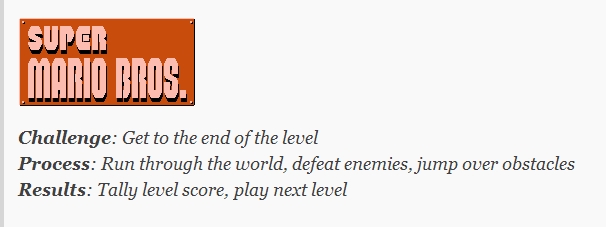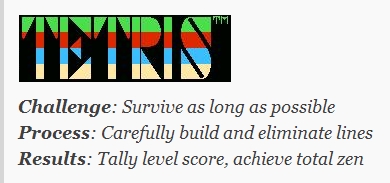Revive Your Game (And Life) with CPR Design

Game designers are among the most curious people in the world. Always on the lookout for new ways to engage players, they’re fascinated by psychological principles, behavioral science and the uncovering sources of motivation. Talking with New York graphic artist David Wallin a few weeks ago, he posited a simple but powerful framework that not only dives to the heart of motivation in game design, but for life as a whole.
The premise of CPR design is simple: You can easily break down the appeal of a certain task by evaluating the challenge it poses, the enjoyment of the process of engaging with it, and by the value of the results that come as a product.
Step One: Break It Down
Think of your favorite thing in the world to do. Does the challenge of that activity appeal to you? Does it seem too challenging, or not enough? Does it make you excited about doing it? Now look at the process of the activity itself. When you’re engaged in the activity, is it enjoyable? Is the process an intrinsically rewarding experience? Finally, look at the results. When you’ve finished, are you left with a sense of fulfillment? Is there a literal, tangible reward? Or is the act of accomplishment itself enough to justify the effort?
Looking at things you only somewhat like can reveal even more. For example, I’m not a very good programmer, and often get frustrated in my adorably inefficient attempts to hack things together. However, I do appreciate the challenge of coming up with a logical method to bring about a desired function, and the sense of accomplishment that comes when I’ve finally gotten the thing working rivals any other dopamine high I’ve experienced.
Yet the process itself of programming – deciphering the logic model, researching the language’s specific syntax, chasing down bugs, bashing your forehead against the wall repeatedly – is so unpleasant that it deters me from engaging with code on a regular basis. In this example, the process is the weak link.
 So how can this apply to game design? The broad, inclusive nature of the categories lends themselves wonderfully to analysis when viewing through the eyes of the player.
So how can this apply to game design? The broad, inclusive nature of the categories lends themselves wonderfully to analysis when viewing through the eyes of the player.
Challenge
Is the challenge posed in your game too great or too easy? Have you taught players through specific mechanics that they’re bad at certain challenges, or that their abilities far exceed what’s required of them?
Think of the short, mid and long-term goals your game is posing. If at any point the challenge is not clearly defined, that could be a source of player apathy that needs to be corrected. Are there clear long-term aspirational goals? Making sure that players always have something to work toward goes a long way in keeping them engaged.
Process
So the player is on board with the challenge asked of them – but are they engaged during the process? Are the mechanics fun and exciting? Do they provide moments of tension and release that readily invite the player’s emotional investment? Look at the game’s feedback mechanisms from every angle – from simple things like how it feels to move in the world, to the underlying mechanics, to subtle details like event-driven dynamic scores and tactile vibration feedback if the controller allows it.
Results
The challenge is intriguing, the process is fun and exciting – how about the results for their trouble? Whatever the payoff is – a reward in the form of a physical prize, in-game points, or content like cinematics; something less tangible like the satisfaction of accomplishment; or just the thrill of a well-played session – is it satisfying enough to ‘close the loop’ posed by the challenge and the process?

Do players lose enthusiasm for the game after encountering a lackluster result? Are they unevenly rewarded heavily for certain challenges, and given the shaft for others? Making sure each gameplay segment has an appropriate result is paramount to investing the experience with a sense of fullness, leaving lasting memories that will invite later playthroughs – and even more important, positive recommendations to potential future players.
And Beyond
CPR is useful for much more than game design – it’s a framework to troubleshoot your life. Love working out in the morning (process) and the day-long energy boost that comes with (results), but can’t drag yourself out of bed in the morning (challenge)? Deal with it by adding more alarms, prioritizing an earlier bedtime or sleeping with the shade open so you get blasted awake by the morning sun.
Love the ease of fast food (challenge), the addictive taste (process) but hate those horrible Big Mac hangovers (results)? Indulge yourself less, eat healthier or knowingly resign yourself to the price of this activity.
It’s much harder to change our behavior if it’s driven by unknowns. By nailing down each major step of an activity, you become increasingly informed and better equipped to design your games – and your life – more effectively than ever before.
